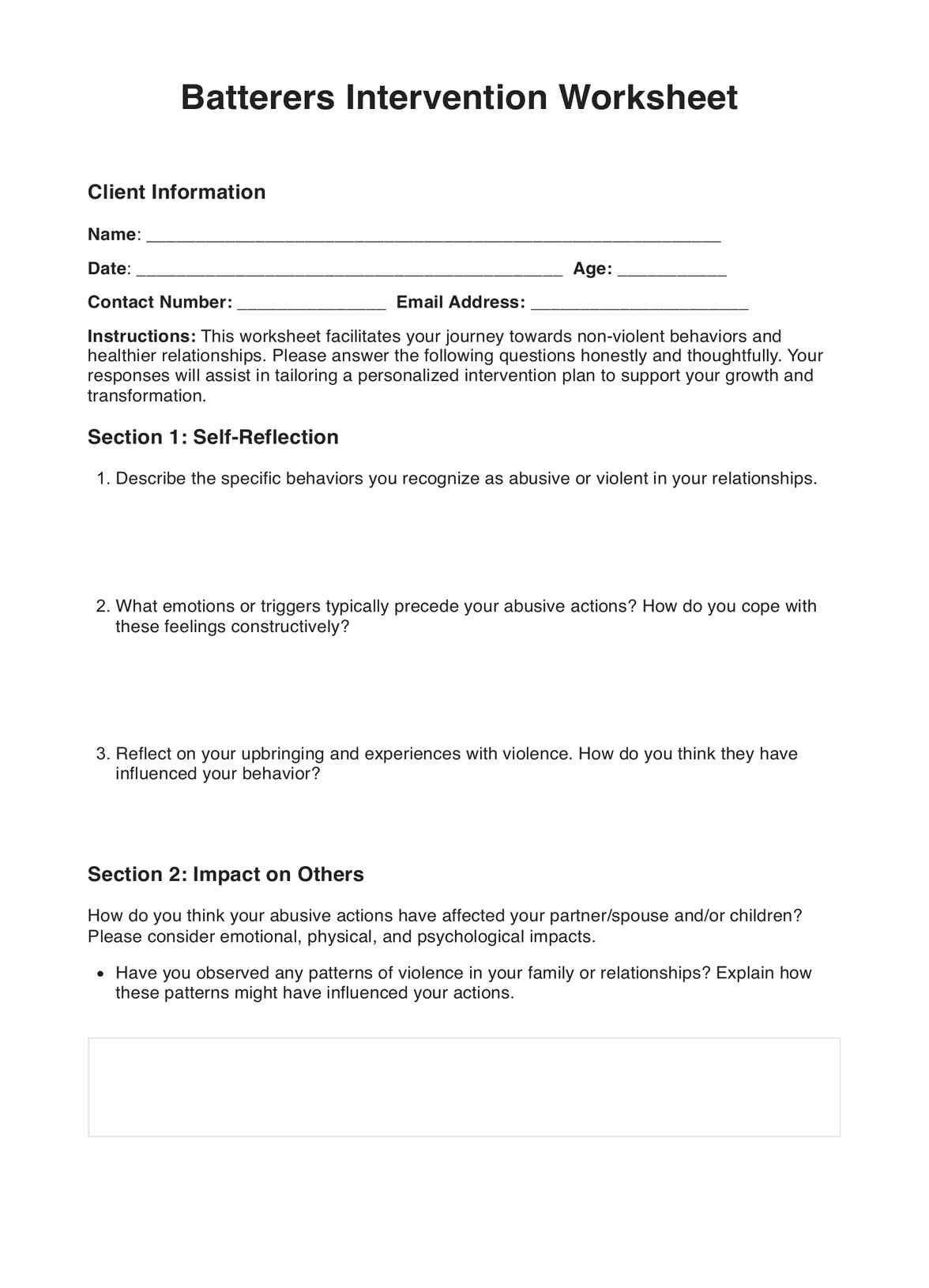The worksheet is primarily intended for healthcare professionals, including counselors, therapists, social workers, and other practitioners involved in domestic violence intervention and prevention programs.

Batterers Intervention Worksheet
Transform behaviors with our Batterers Intervention Worksheet. Cultivate positive change, promote accountability, and foster healthy relationships.
Batterers Intervention Worksheet Template
Commonly asked questions
Yes, the worksheet is grounded in evidence-based practices and draws from research on domestic violence intervention. It incorporates cognitive-behavioral approaches, individualized intervention plans, and accountability principles.
The worksheet is available in a printable PDF format and can be accessed through various platforms, including intervention program websites, professional organizations, and specialized software like Carepatron.
EHR and practice management software
Get started for free
*No credit card required
Free
$0/usd
Unlimited clients
Telehealth
1GB of storage
Client portal text
Automated billing and online payments











